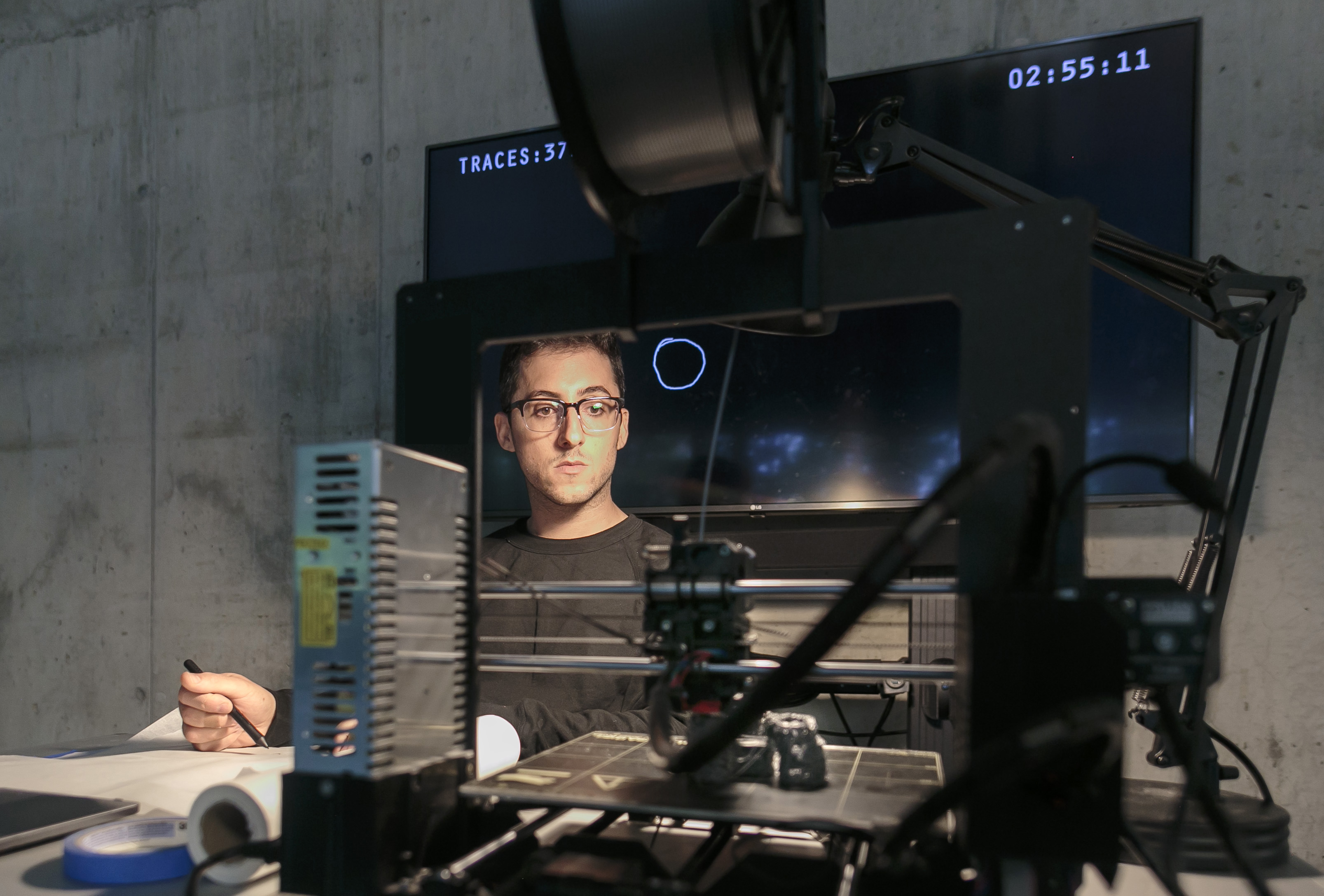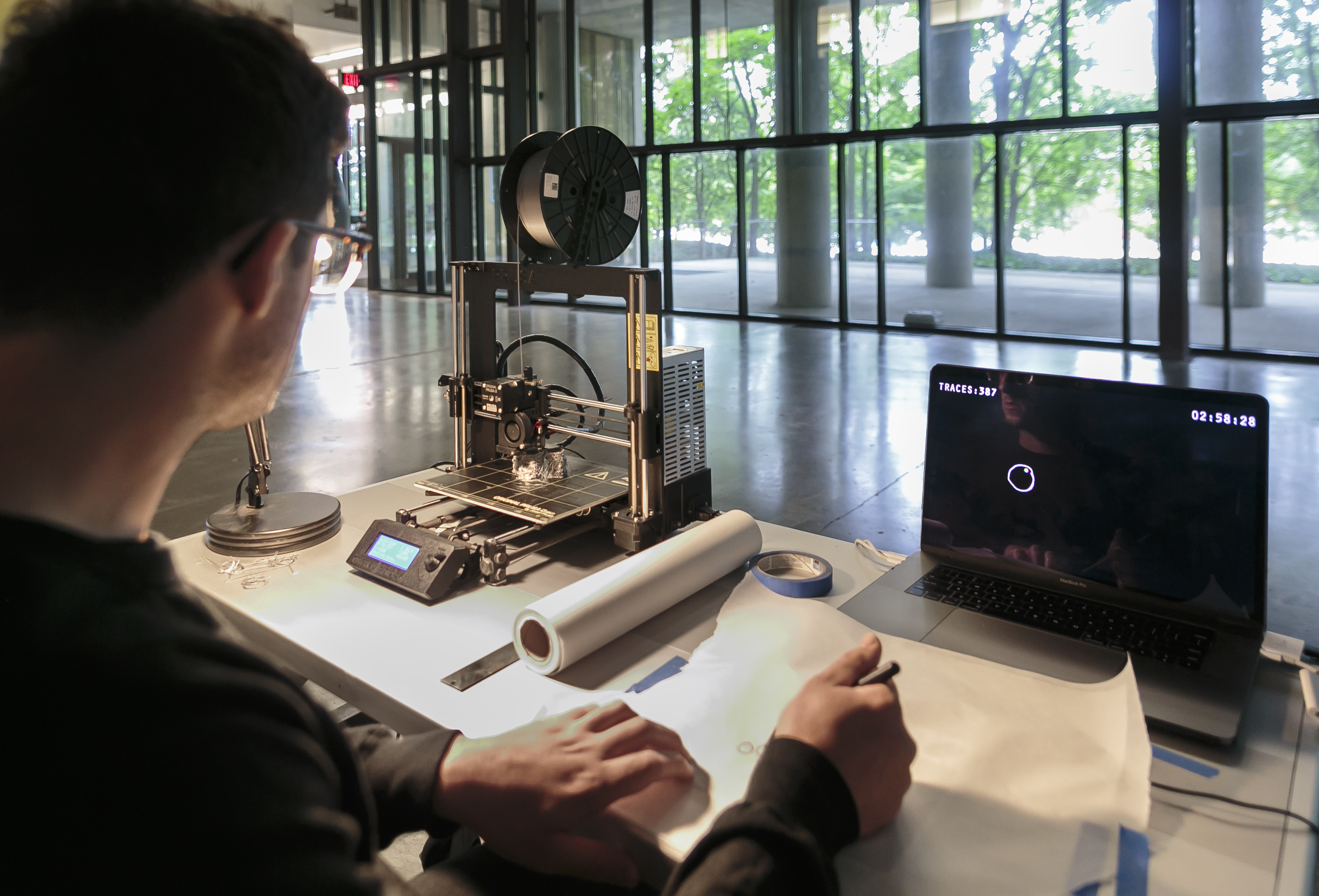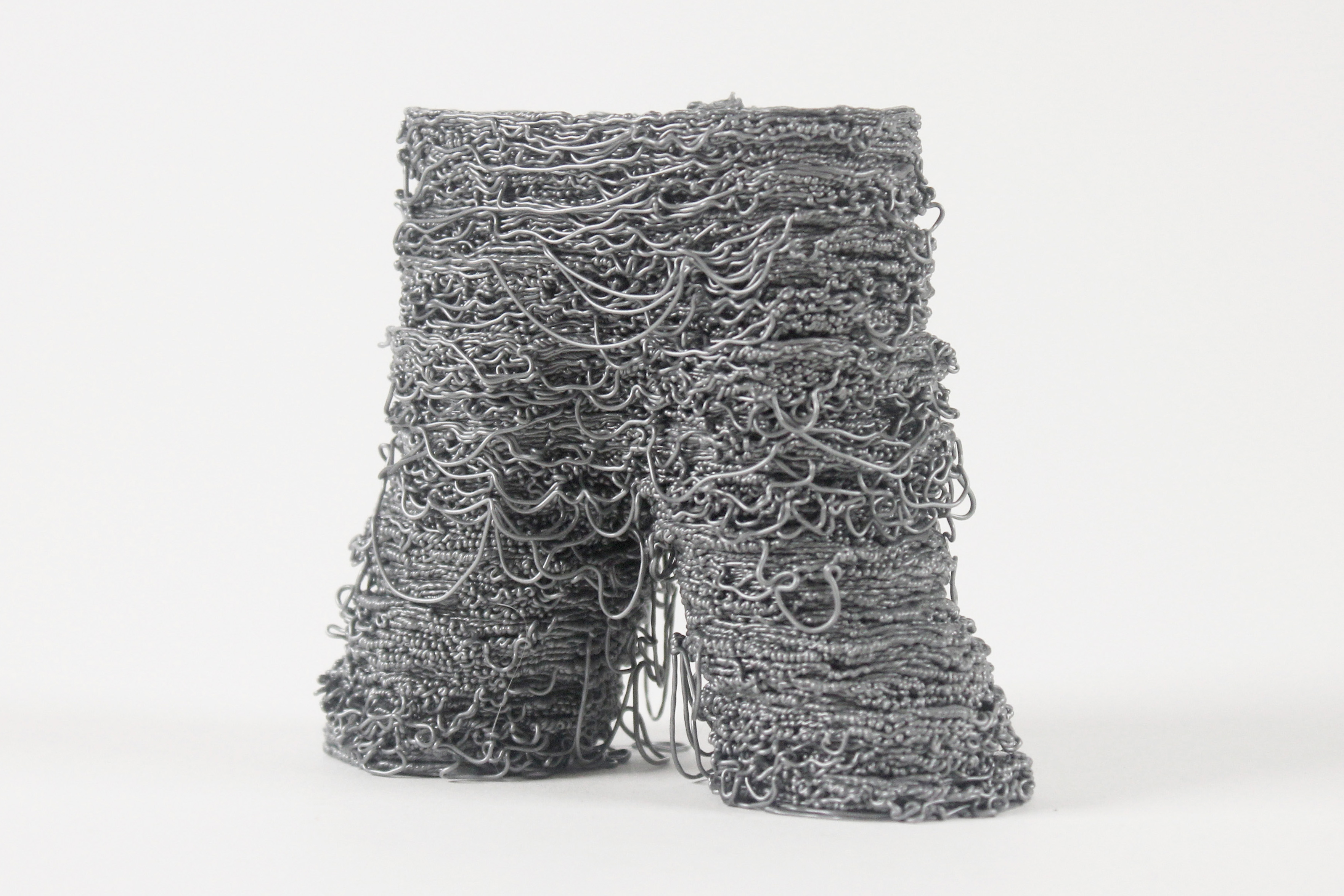imprinting
In improvisational 3D printing (or, imprinting), the designer embodies and performs the long-durational repetition of the 3D printer. Through this embodied making, the designer can overcome the determinacy of standard 3D printing workflows, for example: there is no digital modeling, there is no “slicing” software, and there is no singular G-Code file. Instead, the designer improvises the form of the 3D printed thing by drawing and tracing each contour of their design on a sheet of tracing paper. The tracing paper is on top of a graphics tablet that communicates to the 3D printer through the custom-made “Tracer” software. Each time that the designer lifts their hand from the paper, the 3D printer precisely reproduces their imperfect trace. Once the machine prints a trace, it moves to the next vertical layer and awaits the next input.





